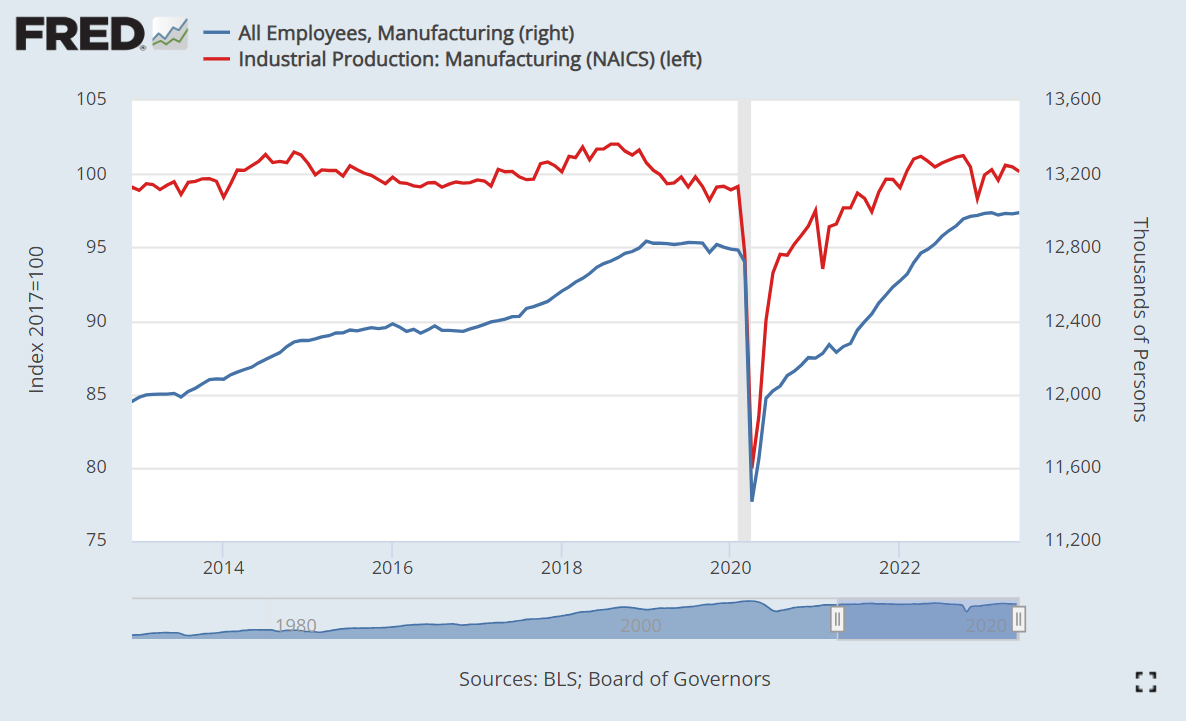Economics
Bidenomics and Illusions of Numerical Democracy
An apparently banal story in yesterday’s Wall Street Journal reveals much about current democracy. The reader familiar with the economic analysis of…

An apparently banal story in yesterday’s Wall Street Journal reveals much about current democracy. The reader familiar with the economic analysis of politics (public choice) may read the story as follows: Joe Biden and his supporters are trying hard to prove to voters that “Bidenomics” has done much for them by spending their or their children’s money, and by pushing Colbertiste industrial policy. Voters only see inflation, not realizing that most of it was due to Trump’s deficits, which were higher than Biden’s. Most voters don’t anyway understand what the candidates are proposing and a crushing majority wouldn’t know (for example) where to find measures or indicators of the rate of inflation on the sprawling government websites; even fewer would be able to understand the numbers and their methodology. (See “Biden Goes All In on Bidenomics. Voters Aren’t Buying It,” July 22, 2023).
The candidate himself, trying to buy votes with his largesse, is incited to say just about anything useful for his purposes—just like the other side, although there is a difference of degree in the brazenness of nonsense and lies. One of Biden’s mouthpieces said that the president “brought hundreds of thousands of manufacturing jobs back to the United States.” In reality, the jobs were “brought back” not from foreign lands, but from the Covid recession of early 2020. The chart below shows that, given the Covid recession, the number of manufacturing jobs did increase by 800,000 during Biden’s mandate thus far, while it had decreased by 36,000 under Trump. As for manufacturing production, which is more revealing than employment (workers’ sweat), it decreased slightly under Trump (given the Covid recession), increased slightly under Biden, and is now back to roughly what it was under Trump (and Obama). If we add the impact of inflation (generated by Trump and Biden), industrial production is a bit lower under Biden than it was under Trump before the recession. This is just an example among many.
By the way, Colbert also thought that his boss Louis XIV made his subjects richer by spending the money (or other resources) he had confiscated from them.
Going back to democracy and to paraphrase Joseph Schumpeter, the typical individual, who is so efficient in managing his private affairs where his own interests are concerned—and can thus contribute so much to general prosperity—becomes an irrational primitive in a necessarily dysfunctional system when he tries to run the lives of all others. Both Friedrich Hayek and James Buchanan have provided useful theories to help escape the truncated dilemma between democracy and tyranny. For a more radical theoretical alternative, Anthony de Jasay defended liberal anarchy, or perhaps it was conservative anarchy.
To simplify a bit, but just a bit, democracy can only work in two ways: if it is a means for changing the government peacefully (“throwing out the rascals”) in a strictly limited state; or if it represents an ideal of collective liberty and “sovereignty” under which the individual is powerless and happy to be so, like in the village of Patrick McGoohan’s The Prisoner.


Argentina Is One of the Most Regulated Countries in the World
In the coming days and weeks, we can expect further, far‐reaching reform proposals that will go through the Argentine congress.
Crypto, Crude, & Crap Stocks Rally As Yield Curve Steepens, Rate-Cut Hopes Soar
Crypto, Crude, & Crap Stocks Rally As Yield Curve Steepens, Rate-Cut Hopes Soar
A weird week of macro data – strong jobless claims but…
Fed Pivot: A Blend of Confidence and Folly
Fed Pivot: Charting a New Course in Economic Strategy Dec 22, 2023 Introduction In the dynamic world of economics, the Federal Reserve, the central bank…















